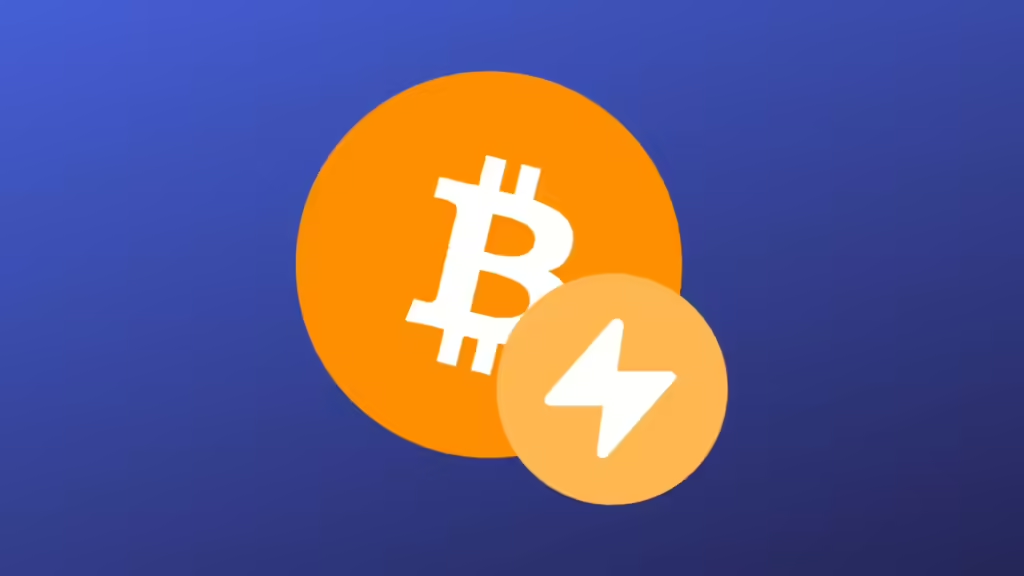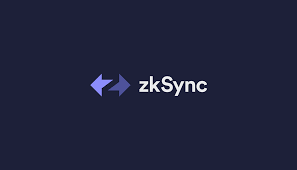Layer 2 protocols are essential advancements in the blockchain ecosystem, designed to address the scalability and efficiency challenges faced by Layer 1 blockchains like Bitcoin and Ethereum. By working on top of the main blockchain network, Layer 2 projects ensure transactions are processed more swiftly and cost-effectively, inheriting the security guarantees from their underlying blockchains. This layer 2 crypto list encompasses a variety of solutions, including Rollups, Sidechains, and State Channels, each playing a pivotal role in enhancing transaction speeds, reducing fees, and maintaining the integrity and immutability of transactions on the main network, ultimately resulting in lower transaction fees.
The significance of these protocols extends beyond technical improvements; they are crucial for the long-term sustainability and adoption of blockchain technology. Given the overwhelming demand for Ethereum’s network capabilities due to the surge in decentralized applications, Layer 2 protocols have emerged as a vital solution to alleviate congestion and reduce transaction expenses by handling operations off-chain. The data link layer, which includes error detection mechanisms, plays a similar role in traditional networking by ensuring data integrity and efficient communication.
The data link, as part of the OSI model, facilitates the transfer of data between network nodes and provides error detection and correction, addressing, and control of data link, ensuring local delivery of frames between nodes on the same network level.
This article aims to delve into the top layer 2 crypto projects, providing a comprehensive overview that not only lists these innovative solutions but also examines their unique technology, tokenomics, and the specific challenges they seek to solve.
By highlighting the best layer 2 protocols, including notable names like Arbitrum, Optimism, and Lightning Network, this piece serves as a guide to the current landscape of layer 2 protocols blockchain, showcasing the forefront of crypto protocols innovation and the potential pathways to a more scalable, secure, and efficient blockchain ecosystem.
Table of Contents
What is Layer 2 projects
Layer 2 networks, often termed as the Scalability Layer, are advanced technological frameworks designed to enhance the performance and scalability of blockchain systems. These networks operate as an off-chain network, processing transactions separately from the main blockchain, commonly referred to as Layer 1 or the Settlement Layer, which is responsible for the recording, verification, and storage of transactions. Layer 2 networks interact with the physical layer by ensuring data transfer between network nodes, thus inheriting the security guarantees of the underlying Layer 1 blockchain.
By handling transactions off-chain, Layer 2 solutions effectively reduce the load on the primary blockchain, allowing for faster processing times and lower transaction costs while still leveraging the security and decentralization of the underlying Layer 1 network.The architecture of Layer 2 solutions involves a variety of technologies including Rollups, Sidechains, State Channels, among others, each designed to address specific scalability and performance challenges.
For instance, Sidechains are independent blockchains that run parallel to the main blockchain and connect via a two-way bridge, handling a portion of transactions to alleviate the main network’s load. Rollups, another significant type of Layer 2 technology, bundle multiple transactions into a single one, reducing the strain on the main blockchain. There are two primary types of rollups: Optimistic rollups and ZK rollups, each providing different mechanisms for transaction verification and security.
These Layer 2 solutions are critical in solving the blockchain scalability trilemma, which posits that it is challenging to achieve scalability alongside high levels of security and decentralization simultaneously. By offloading the transaction processing to Layer 2 networks, the main blockchain (Layer 1) can focus on crucial functions such as security and decentralization, thus enhancing overall network efficiency and user experience.
Examples of Layer 2 implementations include Polygon and Arbitrum, which significantly increase transaction throughput and reduce costs, demonstrating the practical benefits and potential of Layer 2 technologies in real-world applications.
READ MORE: Top Crypto Stock Picks for Savvy Investors in 2024 And How to Pick Them?
1. Arbitrum

Arbitrum, a leading layer 2 solution, leverages Optimistic Rollup technology to enhance Ethereum’s scalability by providing faster transactions and significantly lower costs. With a total value locked (TVL) of $10.7 billion, Arbitrum stands out as a robust platform for developers aiming to build secure decentralized applications (DApps) on Ethereum. This technology suite is specifically designed to scale Ethereum applications by improving transaction speeds and reducing costs compared to the main Ethereum network.
The core of Arbitrum’s technology is the Arbitrum Rollup. This Optimistic rollup protocol operates by assuming that all transactions are valid by default, only verifying through fraud proofs if a transaction is challenged. This method allows for a throughput of 2,000-4,000 transactions per second (TPS), addressing Ethereum’s low TPS issue effectively. Moreover, Arbitrum Rollups post data directly onto Ethereum, ensuring that all transaction data is visible and fraud can be detected and addressed promptly. This integration maintains Ethereum-level security while optimizing transaction processing efficiency.
Arbitrum’s architecture includes innovative features such as Arbitrum One and Arbitrum Nova, which are currently available on the Ethereum mainnet. These platforms are part of Arbitrum’s broader ecosystem, which includes a virtual machine, verifiers, a key, and a manager, all designed to support the localized processing of transactions. This setup not only speeds up processing times but also reduces the operational load on Ethereum’s main network, thereby enhancing overall network efficiency and user experience. The use of AnyTrust chains, where data management occurs off-chain, further reduces fees, making Arbitrum an economically viable solution for a wide range of applications.
Arbitrum’s architecture also incorporates media access control (MAC) and logical link control (LLC) sublayers to manage communication links and frame traffic efficiently. The MAC sublayer determines access to the media, performs frame synchronization, and manages MAC addresses, supporting functionalities like VLAN tagging and link aggregation. Meanwhile, the LLC sublayer handles addressing, flow control, acknowledgment, and error notification within the data link layer, ensuring robust and reliable data transmission. These features contribute to Arbitrum’s ability to maintain high performance and security standards.
2. Optimism

Optimism, a prominent layer 2 protocol, operates on top of Ethereum to address its scalability challenges while maintaining compatibility with the Ethereum Virtual Machine (EVM). This compatibility facilitates a seamless transition for developers from Ethereum to Optimism, empowering them to create and migrate decentralized applications (DApps) with minimal friction. The protocol employs Optimistic rollups, a key feature that significantly reduces network congestion and transaction fees. This technology achieves a gas fee reduction by bundling multiple transactions into a single one, enhancing throughput and efficiency on the Ethereum network.
The governance of the Optimism network is uniquely structured through the Optimism Collective, which is divided into the Citizens’ House and the Token House. This dual-house system plays a crucial role in the decentralized governance of the protocol, where the OP token is utilized not only as a governance token but also as the primary medium for interaction within the Optimism ecosystem. The OP Stack, an evolving set of open-source software, forms the backbone of Optimism, encompassing governance, settlement, and derivation layers, which collectively contribute to the robust architecture of the protocol. Additionally, devices detect and recover from frame collisions, enhancing the error detection and control mechanisms at the link layer, which is vital for maintaining the integrity and reliability of the network.
Currently, Optimism stands as the second-largest Ethereum layer 2 solution, with a substantial $313 million locked in its smart contracts. It hosts a variety of decentralized finance (DeFi) applications, allowing users to engage in activities ranging from gaming and trading on decentralized exchanges to acquiring NFTs and investing in other DeFi platforms. This ecosystem is supported by various DeFi wallets, including MetaMask, enabling users to access Optimism using their Ethereum mainnet addresses. The largest protocol operating on Optimism is Synthetix, with a total value locked (TVL) of $125 million, demonstrating the platform’s significant impact and utility within the DeFi sector.
3. Lightning Network

The Lightning Network, also known as bitcoin lightning network, a pivotal layer 2 protocol for Bitcoin, was first conceptualized in a 2016 paper by Joseph Poon and Thaddeus Dryja. It addresses critical scalability issues by enabling instant, low-cost Bitcoin microtransactions through a network of bi-directional payment channels and smart contracts. This innovative system significantly enhances the transaction capacity and speed of the Bitcoin network, aiming to handle millions to billions of transactions per second, a stark contrast to Bitcoin’s current capacity. Similar to how data-link frames stay within a local area network (LAN) boundary, the Lightning Network operates within its own network to efficiently manage transactions.
Utilizing smart contracts and multi-signatures, the Lightning Network ensures that transactions are secure and reach the intended recipients without the need for custody of funds by third parties. It operates on a peer-to-peer basis, facilitating electronic cash transactions off the main blockchain, which alleviates the load on Bitcoin’s network and reduces transaction fees. The technology not only supports Bitcoin transactions but also extends to other off-chain exchanges between cryptocurrencies, potentially impacting decentralized finance (DeFi) and blockchain-based gaming.
Despite its potential, the Lightning Network faces challenges such as vulnerabilities in its protocol. However, these are typical of a relatively young system, and ongoing development is expected to fortify its security and efficiency. As of mid-2023, the network’s capacity reached 5,490 BTC, showcasing growing trust and utility within the crypto community. This layer-2 solution plays a crucial role in addressing the blockchain trilemma—balancing decentralization, scalability, and security—thereby enhancing the overall functionality of the Bitcoin ecosystem.
Read more : The ABCs of Blockchain Layers: An Insight into Layer 1, Layer 2, and Layer 3
4. Polygon

Polygon, initially known as Matic Network, is a comprehensive Layer-2 scaling solution that enhances Ethereum’s capabilities by improving functionality and fostering widespread adoption across various applications. The platform utilizes a dual approach with a Proof-of-Stake (PoS) Commit Chain and More Viable Plasma (MoreVP) to achieve significant scalability. This setup not only prioritizes performance and user experience but also ensures robust security measures are in place. Polygon’s architecture allows it to process transactions at a staggering rate of 65,000 transactions per second (TPS), providing a seamless experience with low transaction fees and high-speed operations.
The core of Polygon’s ecosystem revolves around its native token, the Matic token , which is integral for powering the protocol. MATIC is used in a gas-based mechanism to pay network fees, incentivizing validators and developers within the ecosystem. This system supports a wide range of decentralized applications (dApps), from gaming platforms to decentralized exchanges (DEXs), enhancing the overall scalability and performance of these applications. Additionally, Polygon’s PoS blockchain acts as a Commit Chain to the Ethereum mainchain, which has already attracted over 80 Ethereum dApps, showcasing its effectiveness and reliability.
Polygon’s technological innovations extend beyond simple transaction processing. The platform is equipped with a suite of solutions aimed at resolving Ethereum’s scalability crisis, which includes zkRollups, Optimistic Rollups, and standalone sidechains among others. These technologies provide the necessary infrastructure for high-throughput applications and are crucial in maintaining the security and sovereignty of the network. Moreover, Polygon is actively developing tools like the Polygon SDK, which allows developers to build and deploy their own Layer-2 scaling solutions, further enhancing the ecosystem’s flexibility and utility. Polygon’s architecture ensures efficient data transfer between hosts connected via the physical link, leveraging sublayers like the Media Access Control (MAC) and Logical Link Control (LLC) to optimize performance and security.
5. Immutable X

Immutable X, launched in 2021, is a specialized Layer-2 solution designed to enhance the usability of non-fungible tokens (NFTs) on the Ethereum network. It leverages Zero-Knowledge Rollups (zk-Rollups) technology, particularly optimized for high-speed, low-cost transactions in the gaming and NFT sectors. Immutable X ensures scalability and security by processing transactions off-chain while maintaining data integrity and transparency on the Ethereum main chain.
The platform supports a throughput of over 9,000 transactions per second, significantly reducing the time and cost associated with minting and trading NFTs compared to traditional Layer-1 Ethereum transactions. This efficiency is achieved through the use of STARK proofs, which are submitted directly to the Ethereum mainnet, ensuring robust security measures are upheld. Immutable X’s architecture also facilitates instant transaction confirmations, which is crucial for maintaining a fluid user experience in fast-paced gaming environments. The logical link control (LLC) sublayer plays a crucial role in managing communication links and handling frame traffic within this architecture.
Tokenomics play a vital role in the Immutable X ecosystem. The platform uses its native utility and governance token, IMX, to incentivize network participation. IMX tokens are used for staking, paying transaction fees, and participating in governance decisions, with users required to pay 20% of every transaction fee in IMX. The total supply of IMX tokens is capped at 2,000,000,000, ensuring a controlled distribution that supports both platform growth and user engagement. Immutable X also emphasizes environmental responsibility, committing to carbon-neutral operations to offset the carbon footprint associated with NFT trading.
6. Loopring

Loopring emerges as a formidable Layer 2 solution, utilizing zkRollup technology to facilitate high-throughput and low-cost trading and payments on Ethereum. As an open-sourced, audited, and non-custodial protocol, Loopring ensures that user assets remain under their control, adhering to Ethereum’s security standards. This technology is particularly optimized for creating scalable payment apps, non-custodial exchanges, and NFT marketplaces, making it a versatile tool for developers.
In Loopring’s architecture, the data link layer plays a crucial role in transferring data frames between hosts connected via the physical link, ensuring efficient communication and data integrity.
The protocol’s architecture allows for the batch processing of thousands of off-chain requests, significantly reducing gas consumption and transaction costs on the Ethereum network. Loopring’s operations, including trade and transfer settlements, are performed off-chain, which enhances transaction speed and efficiency. With the capability to settle approximately 2000 transactions per second and achieve near-instant finality, Loopring stands out for its performance in decentralized trading environments.
Further enhancing its ecosystem, Loopring Protocol 3.6 introduces features like Loopring Pro, Loopring Earn, and the Loopring Wallet. These components provide users with instant transactions at fees 100x lower than those on Ethereum, integrating advanced trading functionalities and innovative earning products within Ethereum’s most secure wallet environment. The platform’s strong online presence and community engagement
7. Starknet

Starknet, a cutting-edge Layer 2 solution, leverages zkRollup technology combined with STARK proofs to provide scalability, high transaction speeds, and low fees, all while maintaining a developer-friendly environment. As a decentralized Validity-Rollup, Starknet enhances Ethereum’s scalability without compromising on security or decentralization. It operates by generating STARK proofs off-chain and subsequently verifying these on the Ethereum blockchain, ensuring Ethereum-level security.
In the context of the OSI model, the data link layer plays a crucial role in Starknet’s architecture by managing Layer 2 networking functionalities such as frame structure, error detection and correction, and link aggregation.
The platform supports a wide range of applications through its general-purpose capabilities, where developers can deploy any business logic using features like Cairo, Account Abstraction, and more. This flexibility is complemented by Starknet’s Ethereum-level composability, which fosters an environment ripe for innovation and creativity. Additionally, Starknet’s unique Appchains allow developers to customize network configurations and implement bespoke features
Tokenomics and community engagement are integral to Starknet’s ecosystem. The platform’s native token, STRK, is utilized for network operations, staking for consensus, and governance voting, shaping the network’s technological and community-driven objectives. Starknet also prioritizes community support through initiatives like the Starknet Gaming Committee and the Developer Hub, which provide resources and funding to encourage development and adoption.
8. zkSync

zkSync is a prominent Layer 2 protocol that enhances Ethereum’s scalability through advanced Zero-Knowledge (ZK) technology. It is designed to process transactions at scale while upholding Ethereum’s core principles of freedom, self-sovereignty, and decentralization. At the heart of zkSync’s technology is its commitment to trustlessness, security, resilience, forkability, and community ownership. These foundational values ensure that zkSync not only scales transaction capacity but also maintains rigorous security and user governance.
The protocol’s ultimate aim is hyperscalability, which involves processing an unlimited number of transactions without compromising security or increasing costs. zkSync achieves this through its innovative ZK-rollup solution, known as Era, which is crafted to be the most secure Layer 2 solution in practice. This is supported by substantial investments in security measures, including over $6 million spent on audits and bounties, ensuring robust protection against vulnerabilities. Era is designed with a user-centric approach, focusing on intuitive and secure user experiences to facilitate mass adoption of web3 technologies.
zkSync’s ecosystem is vibrant and growing, with over 200 leading projects and companies like Chainlink, Uniswap, and Aave showing interest in deploying on the platform. This wide adoption underscores zkSync’s capability to handle over 230 million transactions and host more than 1 million contracts, demonstrating its effectiveness and reliability as a Layer 2 solution. Notably, zkSync operates without a native token, focusing instead on integration and utility within the Ethereum ecosystem.
9. Dymension

Dymension stands out as a modular Layer 1 sovereign protocol, uniquely designed to serve as a hub for high-performance blockchains known as RollApps. These RollApps are Layer 2 modular blockchains, each equipped with its own execution environments, which collectively deliver speed and scalability in a unified user experience. The core of Dymension’s technology is its three-layer architecture: the Execution Layer, Settlement Layer (Dymension Hub), and Data Availability Layer. The Execution Layer hosts RollApps, where each application’s logic resides, allowing for application-specific and autonomous operations with unique execution environments and design flexibility. The Settlement Layer, or Dymension Hub, functions as a delegated Proof-of-Stake chain, providing essential services such as security, censorship resistance, interoperability, and a shared liquidity layer for RollApps.
In Dymension’s architecture, the media access control (MAC) sublayer plays a crucial role in determining access to the media, performing frame synchronization, and managing communications links and frame traffic.
The innovative RollApp Development Kit (RDK) simplifies the deployment process of RollApps by offering a pre-packaged set of generic modules for common functionalities. This kit enables developers to easily customize their RollApps by selecting appropriate consensus mechanisms, smart contracts, and data solutions, fostering a tailored and efficient blockchain environment. Additionally, the Data Availability Layer plays a critical role in ensuring that all transaction data is available for fraud-proof generation in case of disputes, allowing RollApps to select their preferred data availability layer based on factors like security and fees.
Tokenomics within the Dymension ecosystem revolves around the Dymension token (DYM), which is utilized for various purposes including economic security models in fraud proofs, gas fees, governance, and staking. Sequencers, vital for the operation of RollApps, must stake a minimum amount of DYM tokens, which serves as a deterrent against malicious actions and enhances the overall security of the Dymension settlement layer. This structured approach not only strengthens the security of the Hub but also ensures a trust-minimized environment, crucial for the smooth operation and scalability of decentralized applications within the ecosystem.
10. SKALE

SKALE stands as a unique hybrid Layer 1 and Layer 2 solution, engineered to enhance Ethereum’s scalability through its innovative SKALE Hybrid Layer Architecture. This architecture allows for the creation of multiple SKALE Chains, each functioning as an independent App-chain or Hub-chain tailored for specific applications or ecosystems. These chains leverage the security provisions of the Ethereum mainnet, which provides partial security to the network, thus ensuring robust protection while enabling high transaction throughput and zero gas costs.
An off-chain network in SKALE’s architecture refers to the Layer 2 technology built on top of the Ethereum blockchain. This off-chain network inherits the security guarantees of Ethereum while enabling greater transaction throughput and maintaining decentralization and security.
The network operates in its Mainnet Beta phase, showcasing a decentralized cloud that supports the provisioning and deployment of these high-throughput, low-latency SKALE Chains. Each chain can be customized in size based on the amount of resource allocation provided by each of the nodes, which supports all major Ethereum token standards including ETH, ERC20, ERC721, ERC777, and Dai. The SKALE Network’s approach to scalability includes the use of the asynchronous Byzantine fault-tolerant protocol for consensus, enhancing the efficiency and security of transactions.
In terms of economic structure, SKALE introduces an innovative component called SKALE Chain FUEL, essential for the operation of the network’s chains. This model aligns with SKALE’s vision of zero gas fees and faster commit times, which are crucial for applications requiring high-speed and high-volume operations. The network’s ability to provide additional on-chain storage capacity and its pooled transaction validation model further position SKALE as a scalable, efficient, and collusion-resistant solution. These features collectively contribute to SKALE’s overarching goal of providing a scalable and customizable blockchain environment, tailored to meet the diverse needs of modern decentralized applications.
Conclusion
Throughout this exploration of the top 10 Layer 2 protocols, we’ve delved deep into the technological advancements and tokenomics that underpin their solutions to scalability, transaction cost, and efficiency challenges within the blockchain realm. Each project, from Arbitrum to zkSync, offers unique approaches and innovations aimed at enhancing the underlying Layer 1 networks, primarily Ethereum, but extending also to Bitcoin and beyond. Their distinct strategies for optimizing transaction throughput, reducing fees, and maintaining secure and decentralized platforms underline the diverse methodologies being adopted in pursuit of scalable blockchain ecosystems.
In wrapping up, it’s clear that the significance of Layer 2 protocols extends far beyond mere technical enhancements; they represent vital components of the blockchain infrastructure, pivotal for its long-term sustainability and mass adoption. By leveraging these advanced solutions, we’re witnessing an evolution in the blockchain space, moving towards a future where scalability, security, and efficiency are no longer mutually exclusive. As the blockchain landscape continues to evolve, further research and development within these projects will undoubtedly yield even more innovative solutions, contributing to the overarching goal of achieving a fully scalable, decentralized digital future.
FAQs
1. What are the leading Layer 2 cryptocurrencies currently available?
Some of the top Layer 2 cryptocurrencies include Polygon (MATIC), Arbitrum (ARB), Optimism (OP), Metis (METIS), ImmutableX (IMX), Mantle (MNT), and Stacks (STX). These coins are recognized for their role in enhancing scalability and efficiency in blockchain transactions.
2. Can you explain what Layer 2 protocols are?
Layer 2 protocols are designed to address the scalability issues faced by primary (Layer 1) blockchains. These solutions process transactions either off the main chain or through auxiliary frameworks, which helps in reducing both congestion and transaction fees on the primary blockchain.
3. What are the primary types of Layer 2 technologies?
The two main types of Layer 2 technologies include state channels and rollups. State channels facilitate transaction processing off-chain before any finality on the blockchain, while rollups perform transaction computation off-chain but post transaction data on-chain.
4. What is Bitcoin’s Layer 2 protocol, and how does it function?
The Layer 2 protocol of Bitcoin consists of various secondary protocols developed atop the Bitcoin blockchain. These are designed to boost the scalability and efficiency of transactions. By managing transactions off the main blockchain, these protocols enable quicker and more cost-effective transactions, thus alleviating congestion and reducing fees on the Bitcoin network.
Disclaimer: The information provided in this article is for informational purposes only and should not be considered financial or investment advice. The author is not affiliated with any entities mentioned in the article. Please do your own research before engaging in any cryptocurrency-related activities. Hash Herald is not responsible for any loss in the market













